J-STORIES - Japan’s traditional crafts, a rich repository of centuries-old skills and techniques, are popular with overseas visitors and a symbol of Japan. At the same time, however, they are endangered by sluggish sales and a lack of young people willing to take over existing businesses. Sales of traditional craft goods in Japan peaked at 500 billion yen in 1990 and by 2016 had fallen below 100 billion yen. The number of craftspeople meanwhile has also fallen steadily.
To help these Tokyo craft traditions survive, the industry is working to adapt them for modern lifestyles, producing new designs, yet preserving ancient skills and techniques. To this end, it is promoting them both at home and abroad as a “Tokyo brand.”
Launched by the Tokyo Metropolitan Government, which defines traditional crafts as precious assets and as “treasures” of Tokyo, this initiative has been named the Edo Kirari Project. It aims not only to protect skills and expertise, but also to encourage people at home and abroad to actually use traditional craft products in their daily lives. It hopes to establish traditional crafts as a “practical brand.”
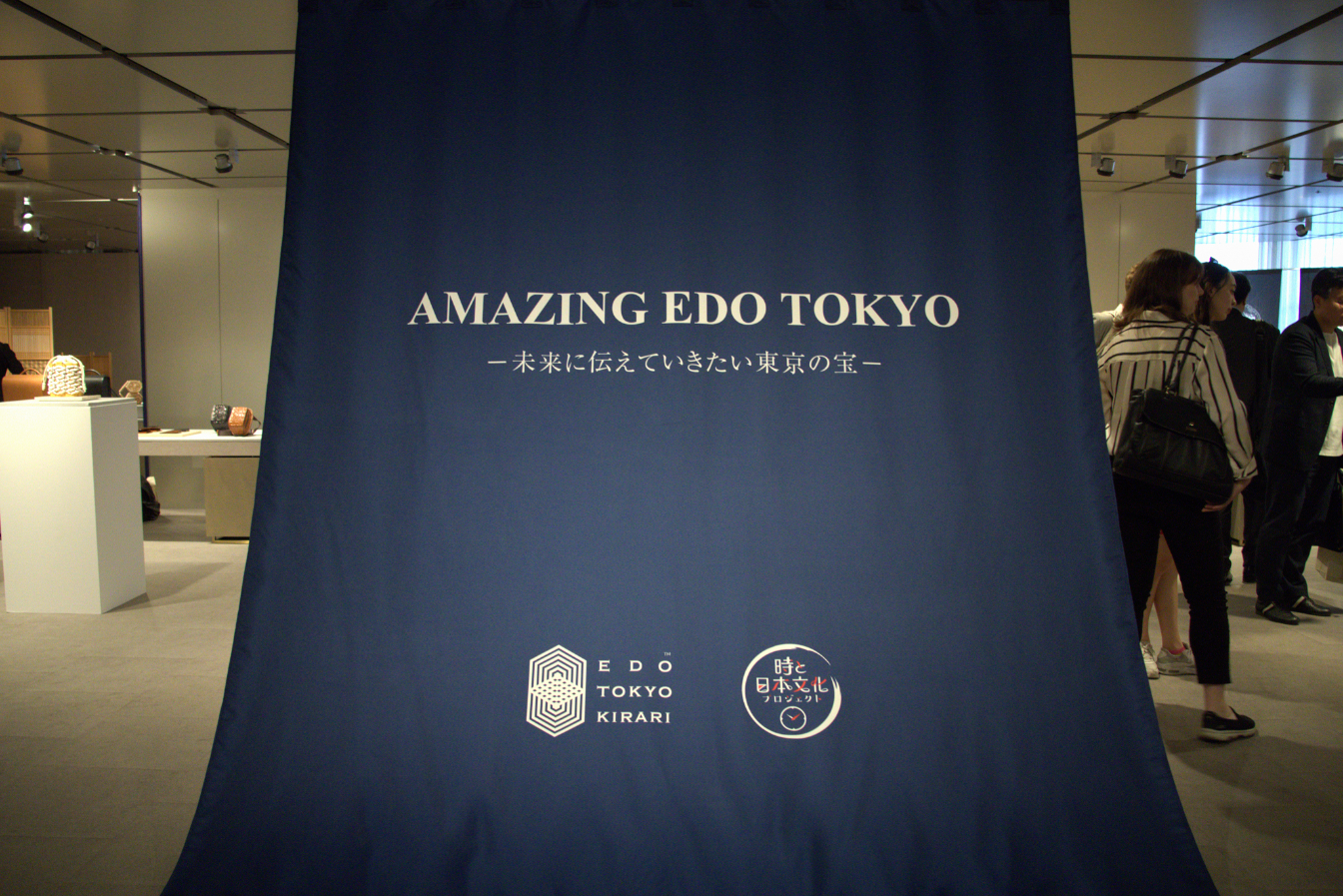
The concept behind the project is “old meets new,” with selected businesses over 100 years old taking on the challenge of adapting their traditional skills and techniques to modern lifestyles. The Tokyo Metropolitan Government and private companies are supporting this initiative by organizing exhibitions and promoting traditional goods to tourists and others on social media.
At the Amazing Edo Tokyo exhibition, eight businesses presented traditional craft goods from the Tokyo region, including Edo woodblock prints, Edo-kiriko cut glass and Edo fans. The wide range of goods on show updated centuries-old craftsmanship with contemporary designs for modern lifestyles.
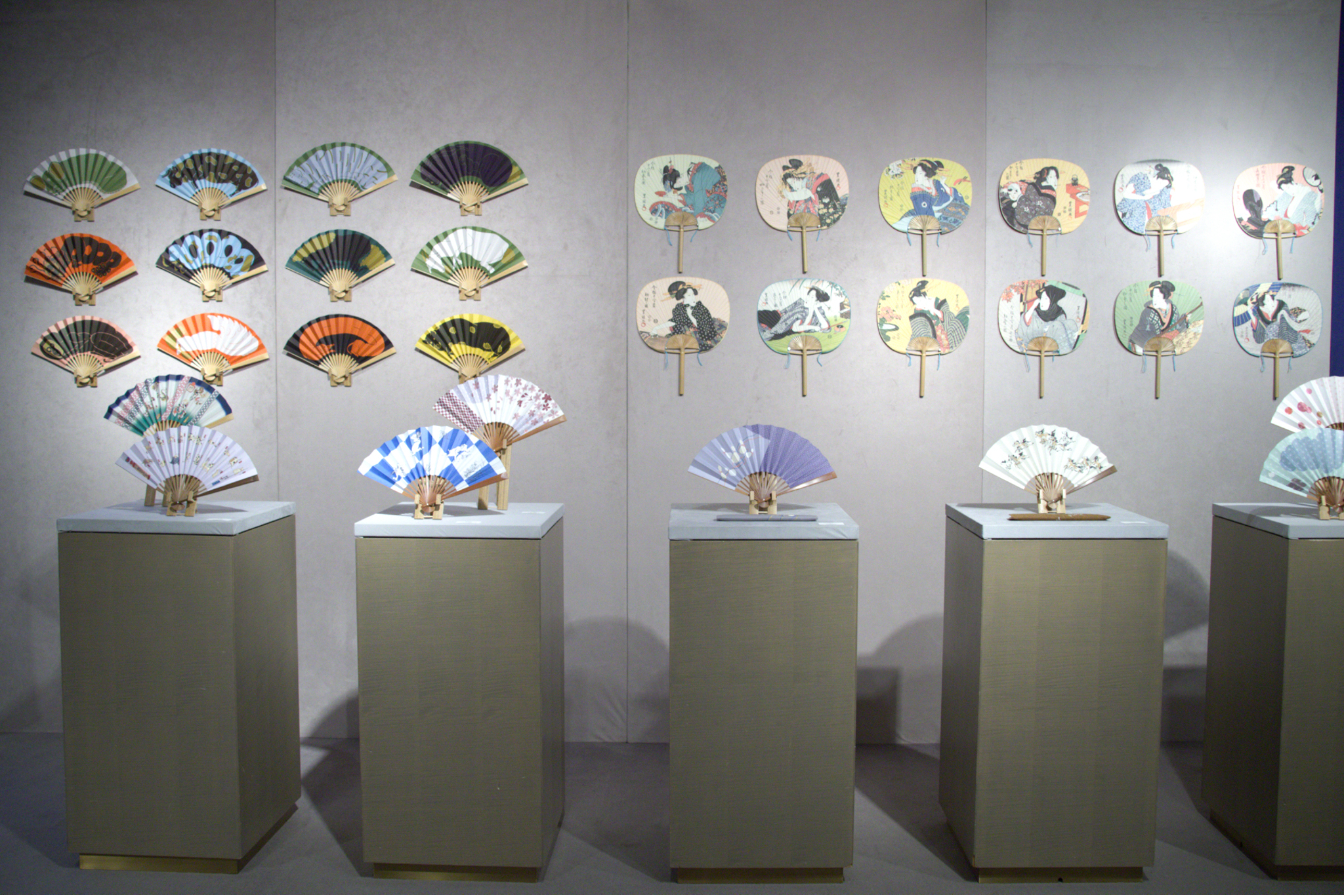
For example, Kimoto Glass Tokyo presented examples of Edo-kiriko, a type of traditional cut glass from Tokyo with highly intricate geometrical designs. Traditionally, kiriko features red or blue glass overlaid with fine crossing lines, but the company showed a number of modern designs with straight stripe patterns in black, which are difficult to cut and require advanced techniques. Such innovative products are a popular purchase for overseas visitors who look for modern and practical designs to match Western living spaces.

Takahashi Kobo has been making ukiyo-e woodblock prints for over 160 years, using techniques and materials that have an over 400-year history in Tokyo and other parts of Japan. Previously, the company has made contemporary woodblock prints featuring anime characters such as Ultraman. But for this exhibition it featured picture scrolls with designs by contemporary illustrators. These featured scenes from Western fairy tales such as "Pinocchio" and "Little Red Riding Hood," as well as pictures of items from the Shoso-in, the treasure house of Todai-ji temple in Nara.
Yukiko Takahashi, the sixth-generation head of the company, says that the company’s techniques and materials have remained the same for 100 years.

The Edo Tokyo Kirari Project is also actively working to create completely new craft works through collaboration between different industries.
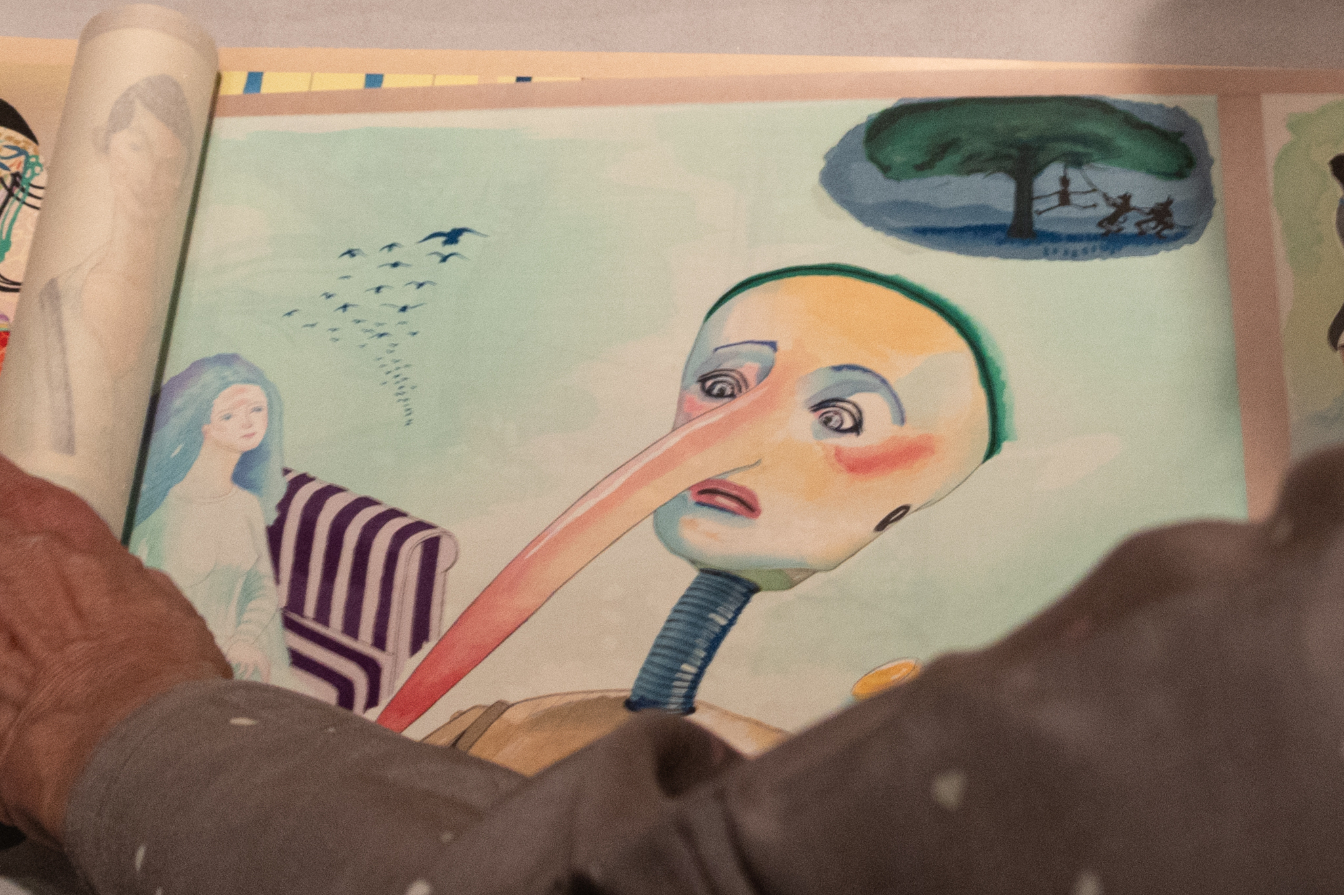
Nakamura Inc. started out as a kimono dyeing company based in the Kanda district of Tokyo from 1923 to 2006, before relaunching as a noren split-curtain maker. For the exhibition, it collaborated with interior art design company Carre Moji to produce a noren curtain with a kanji character reading “to fly.” The curtain was produced using traditional kimono dyeing techniques.
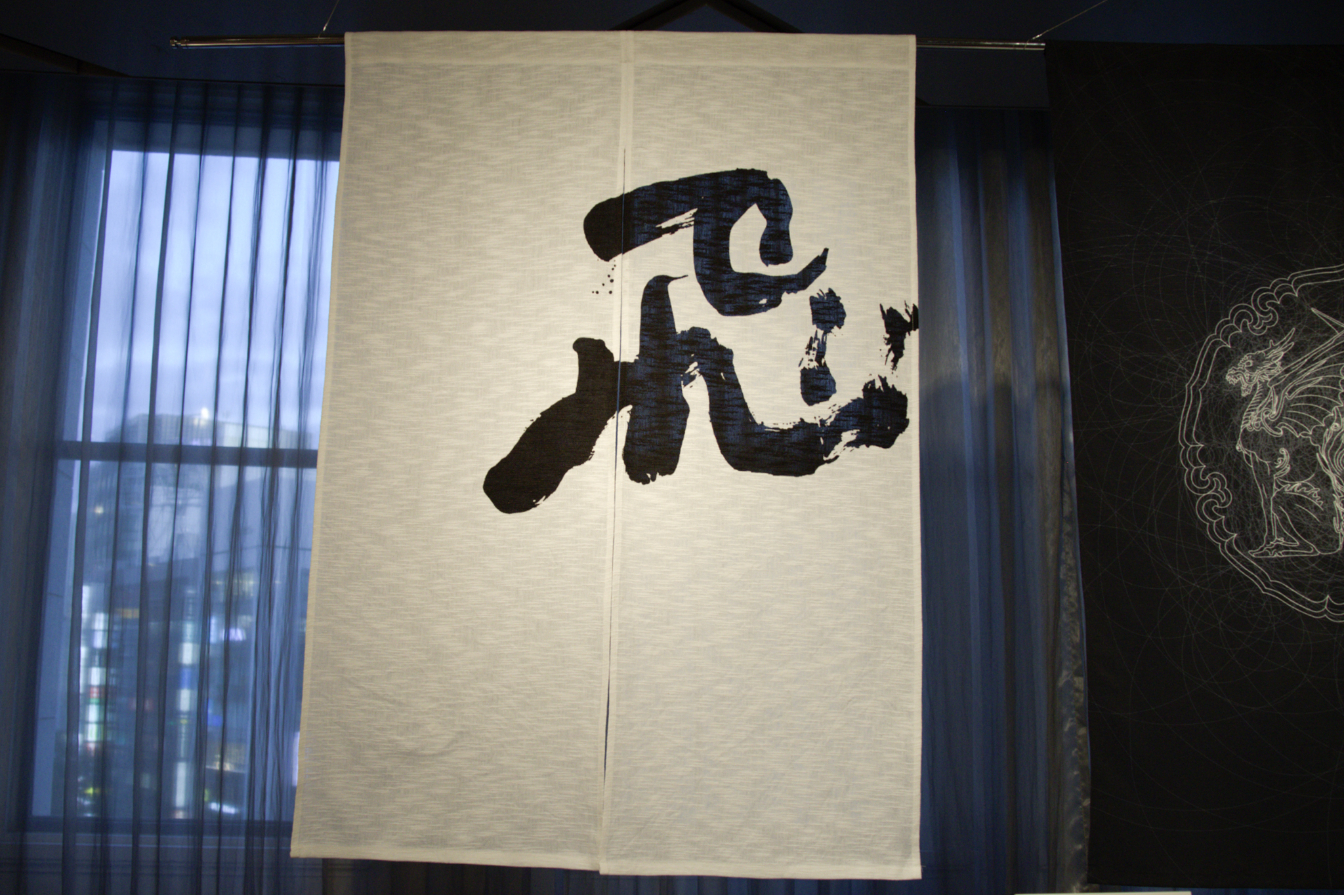
Ryukobo, a long-established workshop that produces colorful kumihimo braided cords for kimono belts and other items, collaborated with Tsuchiya Kaban, which produces leather goods such as school satchels. The item they exhibited was titled the Japan Motif Kumihimo Bag.
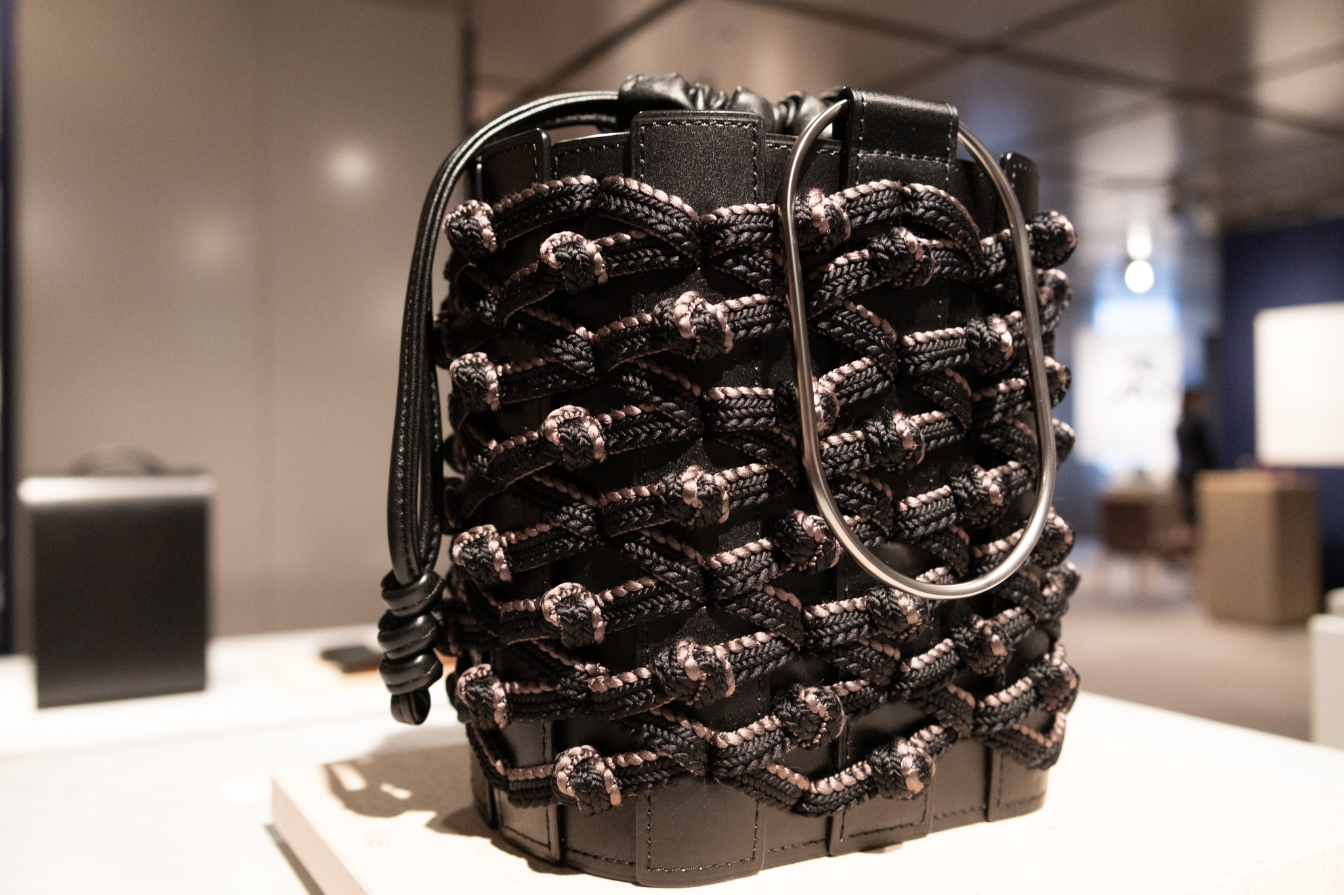
This is not the first time that Ryukobo has ventured beyond the conventional boundaries of traditional crafts, having undertaken work using braided cords for well-established French fashion houses.
Ryuta Fukuda, who is responsible for new business development at the company, told J-Stories that this was due to the company’s “impatience” at the decline of traditional crafts in Japan and the shortage of people to continue businesses.
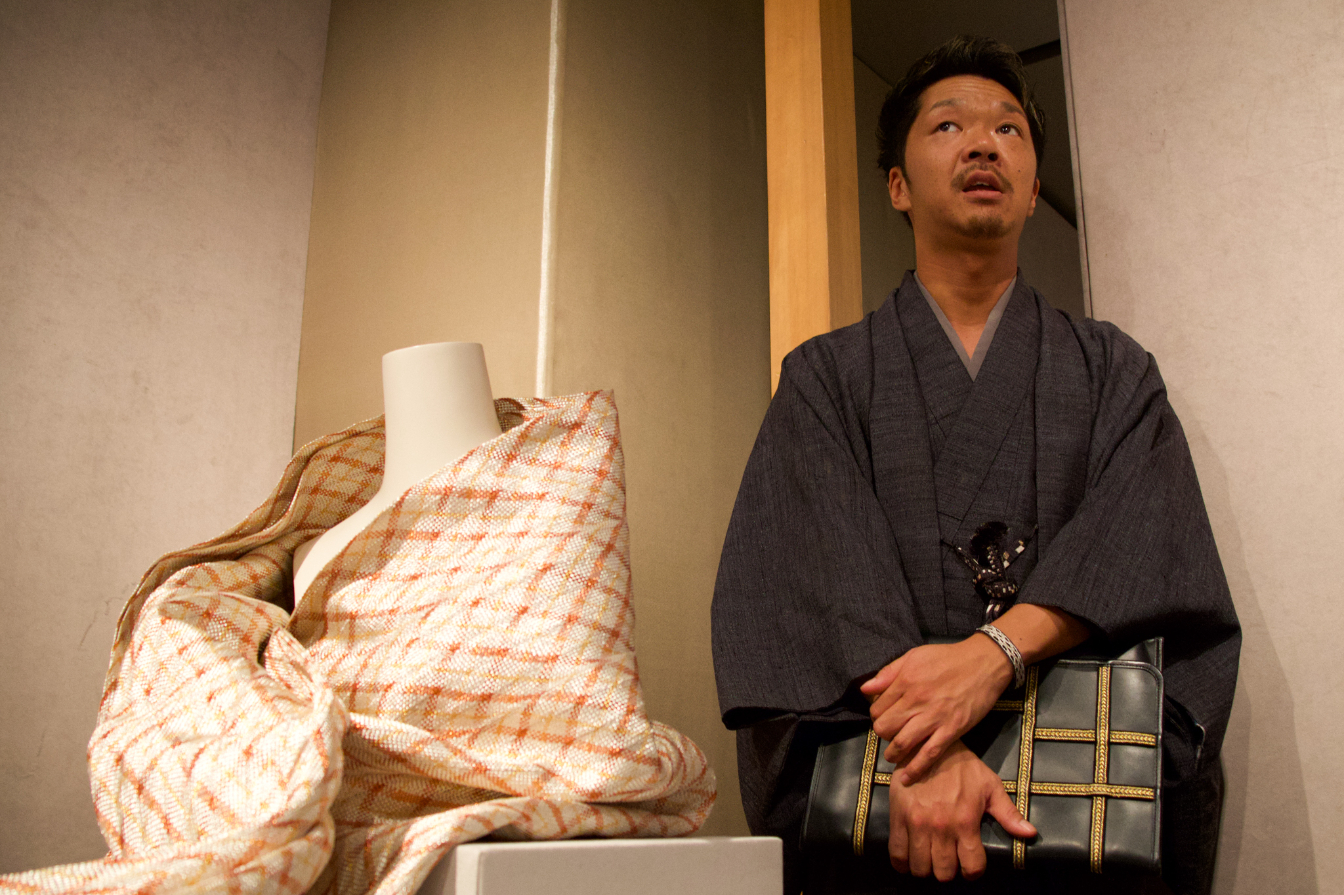
“We are simultaneously artists and craftspeople,” says Fukuda. “We have to do it all, whether mass-produced items or one-off artworks, in order to survive. Even if we change the mode of expression, we will try to preserve our techniques.”
Keiko Fukuzawa, head of the Tokyo Metropolitan Government’s Department for Industrial Policy, which organized the event, pointed to the significance of it being held in Ginza, a place she describes as the center of Tokyo culture and an ideal location to promote traditional crafts as a “Tokyo brand.”

Fukuzawa says that although traditional crafts have an image of being “old” and restricted by fixed ideas, in fact there are many products that can be brought into modern lifestyles. She would like more people to “know them, see them up close and use them to add color to their lives.”
And for all the popularity of such modern takes on traditional crafts as record numbers of visitors come to Japan from overseas, she would also like more Japanese people to appreciate them and help revitalize an industry that is struggling with a lack of successors.

“There are things that first become popular overseas that are popular in Japan, and it is easy to assume that things sold abroad are good. But there are many traditional crafts with wonderful potential without waiting for that,” she says.
“Younger people sometimes tell me that they can’t imagine making a living from these industries. But if they actually held traditional crafts in their hands, they would feel the pleasure of making things. I would love them to try making things!”
Translation by Tony McNicol
Top page photo by Emi Takahata
Top page video by Adelina Vancea
For inquiries about this article, please contact jstories@pacficbridge.jp
***
Click here for the Japanese version of the article

_smallthumbnail.png)
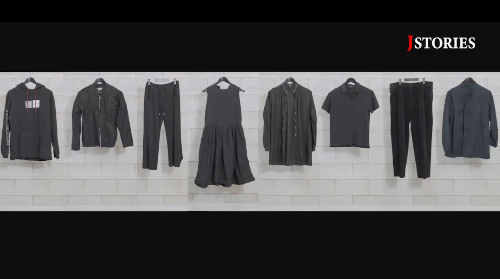
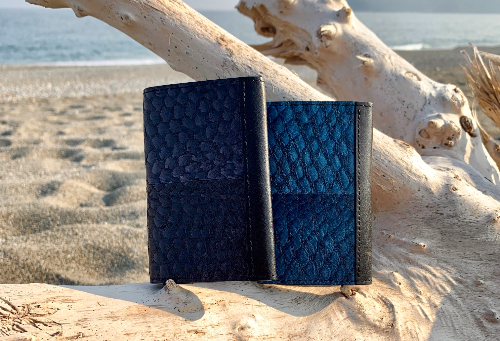
![[Podcast] Japanese technology to supercharge human fertility (Part 3)](https://storage.googleapis.com/jstories-cms.appspot.com/images/1766558713084place-for-scientific-research-2025-03-07-14-08-49-utc%20(1)_bigthumbnail.jpeg)
![[Interview: Part 2] A digital approach to tackle child hunger in Japan with dignity](https://storage.googleapis.com/jstories-cms.appspot.com/images/1766130666509unnamed_bigthumbnail.jpg)
![[Podcast] Japanese technology to supercharge human fertility (Part 2)](https://storage.googleapis.com/jstories-cms.appspot.com/images/1765863548035unnamed-7_bigthumbnail.jpg)
![[Podcast] Japanese technology to supercharge human fertility (Part 1)](https://storage.googleapis.com/jstories-cms.appspot.com/images/1765440905082unnamed_bigthumbnail.jpg)
_bigthumbnail.jpeg)





![[Interview] When digital and physical worlds meet](https://storage.googleapis.com/jstories-cms.appspot.com/images/1747974430456unnamed-2_smallthumbnail.png)




_smallthumbnail.jpeg)

![[Interview: Part 1] From nourishing souls to feeding the hungry](https://storage.googleapis.com/jstories-cms.appspot.com/images/1763695595492unnamed_smallthumbnail.jpg)


っっっっっっっっっっっっっっっっっっy¥っっっっっっっっっっっっっっy¥y」¥っっっっっっっっっっっっっっy_YTういううっっっっっy¥y¥y¥y¥っっっっy_っっっっっっっっっっっっy」¥:っっっy
hyっっっっh